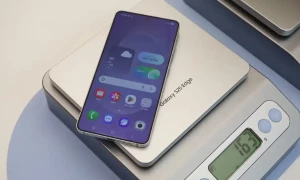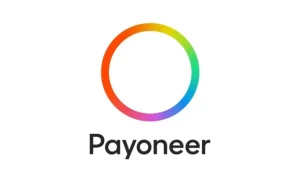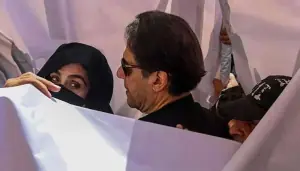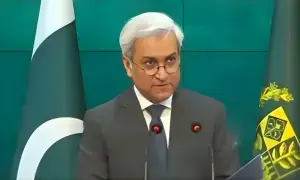Microsoft introduces quantum computer chip
Microsoft has introduced a new quantum chip called Majorana 1, which it claims can address significant real-world challenges within a few decades.
“Our team at Microsoft has successfully observed and controlled a subatomic particle that was only theorized until now,” a technical fellow at Microsoft, Krysta Svore, said in a related video.
Microsoft emphasized that the chip’s design focuses on manipulating an “entirely new state of matter.”
Similar to nuclear fusion power, quantum computing is often said to be just a few decades away from realization. One major hurdle in making quantum computers practical is the high error rates they produce due to qubits being extremely sensitive to environmental factors like material imperfections or slight increases in temperature above near absolute zero.
To tackle some of these issues, Microsoft aimed to develop “topological qubits” by manipulating this new state of matter.
Most are familiar with the traditional states of matter—solid, liquid, and gas—each characterized by the behavior of their constituent atoms. However, there are additional states that exist as well.
“A hundred years ago, mathematicians predicted one such new state of matter: the topological state. And since then, researchers have been looking for a very specific, very useful quasi-particle within it, the Majorana particle,” Svore said. “Last year, we were able to observe it for the first time. And this year, we’re able to control it and use its unique properties to build a topoconductor, a new type of semiconductor that operates also as a superconductor.”
“Majorana’s theory showed that mathematically it’s possible to have a particle that is its own antiparticle,” Microsoft technical fellow, Matthias Troyer added.
“That means you can take two of these particles and you bring them together, and they could annihilate and there’s nothing left. Or you could take two particles and bring them together and you just have two particles. Sometimes it’s nothing, the zero state; and sometimes it’s the electron, the one state.”
The device employs a superconducting nanowire made of indium arsenide to connect two topoconducting wires in an H shape, manipulating Majorana quasiparticles into existence at the ends using magnetic fields and superconductors.
In materials that demonstrate superconductivity at very low temperatures, two electrons pair up to form Cooper pairs. When an unpaired electron is introduced into the system, it enters an excited state, with the energy difference between these states representing ones and zeros in computation.
According to Microsoft, in the Majorana 1 chip, an electron is shared between two Majorana quasiparticles in a delocalized state.
They claimed to differentiate between one billion and one billion and one electrons in a superconducting wire, allowing the computer to determine the state of the qubits.
Microsoft noted that this method is significantly more resistant to errors compared to other quantum computing approaches.
“We took a step back and said ‘OK, let’s invent the transistor for the quantum age. What properties does it need to have?’” Microsoft technical fellow, Chetan Nayak said in a statement.
“And that’s really how we got here – it’s the particular combination, the quality and the important details in our new materials stack that have enabled a new kind of qubit and ultimately our entire architecture.”
Microsoft has published intermediate results, by their own admission in the paper they “do not, by themselves, determine whether the low-energy states detected by interferometry are topological.”
“As we perform more types of measurements, it will become harder to explain our results with non-topological models,” Nayak told Nature.
“There may not be one single moment when everyone will be convinced. But non-topological explanations will require more and more fine-tuning.”
Read more
Japan to restrict chipmaking equipment exports as it aligns with US China curbs
Exclusive: Google says Microsoft’s cloud practices anti-competitive, critical of deals with rivals
Microsoft pressures users to upgrade from unsupported Windows 11 installations
For the latest news, follow us on Twitter @Aaj_Urdu. We are also on Facebook, Instagram and YouTube.





















Comments are closed on this story.